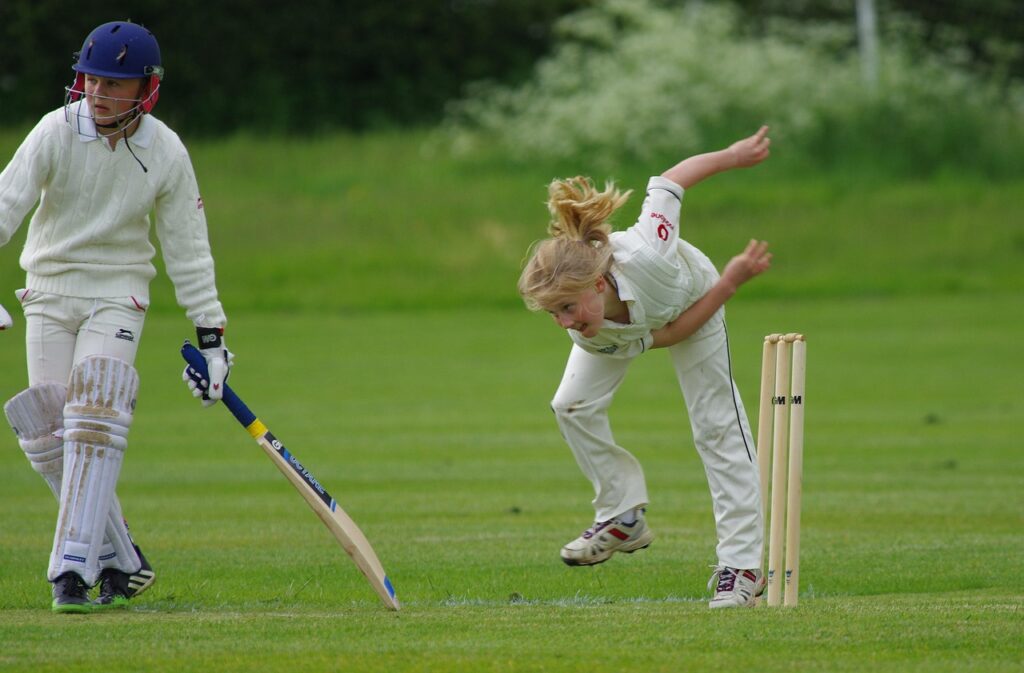Every great game of cricket begins long before the umpire calls “play.” It starts in small signs – a flag that lifts against a breeze, a groundsman rubbing soil between his fingers, a batter tracing a crease line twice instead of once. These little cues build the rhythm you feel on the boundary rope and through a television screen. Live sport has its own pulse, and cricket makes that pulse easy to hear: the hush as the bowler turns, the release as seam hits deck, the chorus of hands when the ball finds the rope. Even if you’ve never bowled a ball or worn spikes, you sense the tempo by instinct. It’s why a tight single can tingle more than a towering six, and why a maiden over can sound louder than any replay package.
Most fans want a simple, steady way to stay with that rhythm – fixtures when you need them, clean score feeds, and quick context during long spells. If cricket nights are a part of your week, you’ll appreciate having essentials one tap away: schedules, squads, and live cues gathered here so your attention stays on the field instead of chasing tabs. One reliable hub clears noise from your match routine, and a clear routine lets the rhythm do its work.
Timing you can feel, not just measure
Cricket’s music is timing. Bowlers don’t merely deliver; they compose – length like a bass line, variation like a lead. Batters, for their part, read the score as sheet music: sometimes you lean into a drive on 38 because a field just widened; sometimes you ride a spell on 72, hiding ambition behind soft hands. Spectators who swear they “don’t do numbers” still track the score by ear. They know that a chase at 7.5 an over sounds different from 8.5, that a wicket before drinks changes the key of an innings, and that space opens when a captain gets greedy with an attacking ring.
You can watch a game without any of this, of course – but noticing it makes the whole night richer. Once you tune to tempo, you stop hunting for highlight moments and start enjoying the connective tissue: a leave that tires the bowler, a sighter that maps bounce, a throw that tells you the outfield is quick. Rhythm is the bridge between what the players intend and what the rest of us feel.
Phases that set the pulse
Cricket breathes in phases, each with its own stride. The first spell is a prologue; the ball is hard, the slips are hungry, and every defensive stroke is louder than it looks. Middle overs often choose the novel: slow turns, nudges, and a quiet drift that can either set a platform or lull a set batter into one loose stroke. Death overs are percussion – fielders turn into sprinters, bowlers bet their best ball on a plan that must hold, and the crowd rides each delivery like a wave. Through it all, captains are editing the rhythm line by line: a short mid-wicket moves five yards and the leg-side single disappears; a third man walks finer and the dab becomes a trap.
You don’t need to name these moves to feel them. What matters is recognizing when a phase is changing. The field flares outward and the tempo slackens; the ring creeps in and energy tightens. Catch those inflection points and you’ll predict where the drama lands a few beats early.
Weather, light, and the ground’s hidden metronome
Conditions decide tempo more than most fans admit. A heavy sky makes the ball nibble; the rhythm slows because batters must respect late movement. Heat dries a surface and turns the day into a spin clinic; the rhythm becomes a dance of feet and soft hands. Floodlights push sight back into the bowler’s favor for a while, and twilight can make an ordinary over feel loaded. Even the square itself is a metronome – some pitches reward straight lines and honest lengths, others demand angles and cutters that die on the practice strip.
If you’ve ever stood on grass before the toss and felt a dryness underfoot, you know how much the day can tilt from that single sensation. The magic is seeing players hear the same beat: the seamer who shortens his stride by a step; the batter who starts sweeping early; the captain who backs long boundaries instead of tempting rope catches. Cricket is full of quiet agreements with the ground.
When patience is louder than applause
We remember sixes, but the most decisive beats are often the light ones. A batter ignores four scoring balls to keep a match-up alive. A bowler bowls two bouncers to sell a yorker. A fielding unit throws in on the bounce every time, and the run-out finally arrives not from brilliance but from boredom forced on the batting pair. Live rhythm rewards people who can live with silence: a small leave that makes the line look wider next ball, a soft single that turns strike at the right moment. On television, these choices look routine. Pitch-side, they ring like a metronome.
That’s why good commentary is a kindness. The best voices don’t drown the beat; they point to it and step back. “Changed the angle.” “Field tighter at mid-wicket.” “Bowler asked for a different ball.” Short notes, long echoes.
The social soundtrack
The field writes the music; the crowd adds lyrics. In India, that chorus is everywhere – on an apartment terrace, a hostel common room, a bus with a phone wedged between fingers, a family sofa that grows noisier by the over. Rituals matter as much as statistics: a certain cup for tea, a lucky seat on the carpet, a playlist of jingles that get unmuted only after fifty runs. The social soundtrack steadies nerves and keeps the night fun even when the chase drifts or the spell bites. If you’re watching with friends, you know the simple rules that keep the room bright: celebrate plays, don’t pick on people; share the snack bowl; call the field, not the names.
These small courtesies let the rhythm fill the room. Nobody competes with the over-by-over pulse; everyone leaves with the same story, retold a little differently in the kitchen an hour later.
Tools that stay out of the way
The most useful match tools are almost invisible. Big type, clean buttons, gentle alerts for things that matter – a confirmed injury, a change in the ring, a batting partner suddenly taking strike back each over. You want a path that survives weak signal, sits quietly during lulls, and wakes you only when tempo actually turns. That’s what one-tap hubs are for: a simple way to check line-ups and timings, then get out of your hands so you can catch the delivery live. Anything that demands more attention than the bowler’s gather is taking too much.
Good tools also protect the finish. Dark mode keeps battery alive into the last over; low-data views stop the spinner icon from stealing the drama; replays are there if you missed a beat while passing plates.
Learning to listen
If there’s a secret to the “magic” that people talk about, it’s this: learn to listen before you judge. Cricket rewards the watcher who counts quiet things – leaves that tell you about bounce, overs where intent shifts without a boundary, body language that says a plan has run out of road. Set yourself a small task next match: pick one bowler and track his lengths for three overs; pick one batter and note when he turns down twos. By the end of the innings, you’ll feel the story under the score. Scores end; stories travel.
The green field will keep writing them. Some nights the rhythm will feel like a drumline; other nights it will breathe like a ghazal. You don’t control the beat, but you can meet it halfway: come prepared, keep the room kind, and give the game enough silence to sing. When it does, you’ll know – it’ll be the over you replay in your head on the walk home, the delivery you still hear as you rinse the last cup, the small sound of ball on seam that proves live sport is still the best music there is.


 is the founder of Luck Lounge Land, a platform dedicated to gambling and game theory. Raised in Ironton, Ohio, Ronaldie studied Business Administration and Information Technology at Ohio University. Inspired by a summer internship at a Las Vegas casino, he created Luck Lounge Land to blend his expertise in business and gaming. His website offers news, insights, and interactive features for gambling enthusiasts worldwide.
Ronaldie's innovative approach has made Luck Lounge Land a popular resource for gamblers. He frequently shares his knowledge through articles and webinars. His passion for educating others is evident in the site's 'Game Theory Academy.' Ronaldie's commitment to quality content has attracted a loyal following. He continuously seeks ways to enhance the user experience. Outside of his work, Ronaldie enjoys exploring new casino trends and technologies.
is the founder of Luck Lounge Land, a platform dedicated to gambling and game theory. Raised in Ironton, Ohio, Ronaldie studied Business Administration and Information Technology at Ohio University. Inspired by a summer internship at a Las Vegas casino, he created Luck Lounge Land to blend his expertise in business and gaming. His website offers news, insights, and interactive features for gambling enthusiasts worldwide.
Ronaldie's innovative approach has made Luck Lounge Land a popular resource for gamblers. He frequently shares his knowledge through articles and webinars. His passion for educating others is evident in the site's 'Game Theory Academy.' Ronaldie's commitment to quality content has attracted a loyal following. He continuously seeks ways to enhance the user experience. Outside of his work, Ronaldie enjoys exploring new casino trends and technologies.
